#health technology
Explore tagged Tumblr posts
Text
Feeling Down Quick Tips to Uplift Your Mood 🚀
youtube
2 notes
·
View notes
Link
Occlusion myocardial infarction (OMI) impacts a large number of people, yet fewer get diagnosed. This is because their ECG fails to show an elevation in the ST region. An elevated ST region indicates the presence of OMI. Such patients can receive great help from immediate reperfusion therapy, but the problem is that no tool can accurately identify them in the initial assessment. At the University of Pittsburgh, USA, scientists conducted a study with a sample space of 7,313 patients in the US with the aim of developing machine-learning models for detecting OMI effectively through ECG. The developed models showed higher accuracy, precision, and sensitivity, outperforming clinicians and commercial interpretation systems. The features of the models were validated by clinical experts as well, increasing the scope for a better understanding of the underlying mechanisms of OMI.
Effective ECG diagnosis of acute coronary syndrome (ACS) in individuals with acute chest pain has long been difficult. Blockages in the coronary arteries cause ACS, a condition where there is less blood flow to the heart. To segregate individuals with ST-elevation myocardial infarction (STEMI) from those with other kinds of ACS, clinicians analyze ST-segment elevation (STE). In the absence of STE on the ECG, a biomarker-driven approach is followed.
The biomarker-driven approach involves the measurement of cardiac biomarkers such as troponin. But this approach has two significant limitations. First, 25 to 35 percent of individuals with non-STEMI experience occlusion myocardial infarction (OMI), which entails total coronary artery blockage. Such patients are more vulnerable than patients with ACS with an open artery and require urgent insertion of a catheter into the blood vessels of their heart. They are also subjected to unnecessary treatment delays, which obviously increase their mortality risk. Even though ECG findings capable of indicating OMI are described in the literature, they are subtle and include complex changes in the ECG waveform. Thus, visual interpretation by clinical experts proves to be a rather suboptimal approach.
Continue Reading
4 notes
·
View notes
Text
"hey why are all the barrier garments like linen shirts or chemises or combinations going away?"
"oh we have more washable fabrics now! you don't need to worry about sweat reaching your outer clothing when you can just chuck it in the washing machine!"
"cool!"
[100 years later]
"so uh all of those new washable fabrics are leaching microplastics into our water, and the constant machine-washing wears garments out faster. they're also not really sturdy enough to be mended, so we keep having to throw them out and now the planet is covered in plastic fabric waste that will never break down. also it turns out that the new washable fabrics hold odor-causing bacteria VERY well. so could we get those barrier garments back please?"
"sorry babe linen now costs $100000/yard and since it's been so long without them, nobody knows how to adapt barrier garments to the current styles anyway"
"..."
"maybe try this new $50 undershirt made of Special Sweat-Wicking Plastic Fabric! :) :) :)"
#fashion#clothing#modern clothing is NOT practical. it may seem like it on the surface but we've moved so far from#actual practicality that if you take one step out of the system it breaks down#and we need to change the entire system for our own health and the good of the planet#I'm not saying everyone has to dress full historical stylistically! but. we need to bring back some TECHNOLOGIES our ancestors used
21K notes
·
View notes
Text
youtube
#Remote telemonitoring#telehealth#surgical oncology#post-surgical care#cancer recovery#real-time monitoring#virtual consultations#patient safety#oncology innovation#wound healing tracking#remote patient monitoring#personalized oncology care#vital signs tracking#recovery management#early complication detection#health technology#cancer patient support#remote healthcare#digital health#precision medicine.#Youtube
0 notes
Text
Home health care in Chicago, Illinois is evolving to meet the needs of an aging population and those with chronic conditions. As the demand for personalized care grows, innovative solutions are emerging to offer more effective and compassionate services. Modern home health care focuses on integrating advanced medical technologies with personalized care plans, ensuring that patients receive the attention they need in the comfort of their own homes. By leveraging the latest advancements, providers can deliver better outcomes and enhance the quality of life for their patients.
0 notes
Text
Empowering Your Health Journey: A Comprehensive Guide to Navigating the Digital Health Landscape
In the heart of the 21st century, we find ourselves immersed in a world where technology and healthcare intersect in unprecedented ways. From wearable fitness trackers that monitor our every step to telemedicine platforms that bring healthcare to our fingertips, digital tools have revolutionized how we approach health and wellness. However, as we embrace these innovations, it’s imperative to…
0 notes
Text
Maintaining your heart health is crucial, and with the rise of modern technology, it’s easier than ever to keep track of your cardiovascular well-being from the comfort of your home. Our home care services in Baltimore, Maryland, have become invaluable for those looking to monitor their heart health without frequent visits to the doctor. With devices like blood pressure monitors, smartwatches, and mobile apps, you can keep a close eye on vital stats such as blood pressure, heart rate, and ECG readings. These tools allow you to take a proactive approach to your health, ensuring you stay informed and can act quickly if any irregularities are detected.
1 note
·
View note
Text
🌐 Tune in to the full episode to gain a deeper understanding of this cutting-edge therapy and consider new possibilities for your health journey. Don't forget to visit Resona Health for an exclusive $150 discount for our listeners!
#HealthTechnology #ResonanceTherapy #PodcastEpisode #InnovationInHealth #ChampagneConnection
0 notes
Text

Embark on a journey towards rejuvenation with nad iv treatments in Georgia. Known as a source of revitalization, these innovative therapies are capturing the interest of people all over the Peach State. Uncover the secrets to a healthier, more energetic life today. Visit now to know more.
0 notes
Text
Unlocking the Power of Digital Health: 8 Essential Insights for a Healthier Tomorrow
Digital health is transforming the healthcare landscape, offering numerous benefits and opportunities for improvement. What Does Digital Health Mean?Types of Digital HealthDigital Health Examples8 Essential Insights for a Healthier Tomorrow1. Embracing Digital Health for a Healthier Tomorrow2. The Power of Data in Digital Health3. The Role of Technology in Digital Health4. The Importance of…
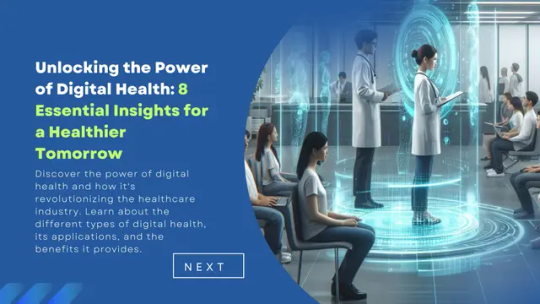
View On WordPress
0 notes
Text

Beurer BM 45 Upper Arm Blood Pressure Monitor
Beurer BM 45 Blood Pressure Monitor is a fully automatic upper-arm digital blood pressure monitor. It provides quick and reliable reading. It is an easy-to-use digital blood pressure monitor with a white illuminated digital display that provides an average of all saved values and an average of morning and evening blood pressure values for the last 7 days.
https://www.cureka.com/shop/healthcare-devices/medical-equipments/bp-monitor/beurer-bm45-upper-arm-blood-pressure-monitor/
#Health#Blood pressure#Monitoring device#Medical equipment#Hypertension#Cardiovascular health#Home healthcare#Digital health#Wellness#Health technology
0 notes
Text
Investing in India’s HealthTech Revolution: Opportunities and Challenges

In the fast-evolving landscape of healthcare, technology has emerged as a transformative force, giving rise to HealthTech. This blog explores the significance of HealthTech, delves into the ongoing revolution in India's healthcare sector, and unpacks the opportunities and challenges that accompany investments in this dynamic domain. As investors increasingly look towards India for promising ventures, understanding the nuances of the HealthTech revolution becomes paramount.
HealthTech, a portmanteau of health and technology, represents the integration of digital innovations into healthcare systems to enhance the delivery of medical services, improve patient outcomes, and streamline operational processes. This includes a spectrum of technologies such as telemedicine, wearable devices, artificial intelligence, and data analytics that collectively contribute to a more efficient and patient-centric healthcare ecosystem.
Importance of HealthTech:
1. Enhancing Accessibility:
HealthTech plays a pivotal role in overcoming geographical barriers, particularly in countries with vast and diverse populations like India. Telemedicine, for instance, enables individuals in remote areas to access healthcare consultations without the need to travel long distances, thereby improving healthcare accessibility.
2. Improving Patient Outcomes:
The integration of technology in healthcare facilitates better patient outcomes through personalized treatment plans, remote patient monitoring, and predictive analytics. This empowers healthcare professionals with data-driven insights, enabling them to make informed decisions and optimize patient care.
3. Streamlining Healthcare Operations:
HealthTech solutions streamline administrative tasks, reduce paperwork, and enhance overall operational efficiency. Electronic Health Records (EHRs), appointment scheduling apps, and automated billing systems contribute to a more organized and seamless healthcare delivery process.
HealthTech Revolution in India:
1. Telemedicine Adoption:
India has witnessed a surge in telemedicine adoption, especially in the wake of the COVID-19 pandemic. Platforms offering virtual consultations have become instrumental in providing timely medical advice, diagnosis, and follow-up care, making healthcare more accessible and convenient.
2. Wearable Technology:
The proliferation of wearable devices has empowered individuals to monitor their health in real-time. From fitness trackers to smartwatches with health sensors, wearable technology has become an integral part of preventive healthcare, promoting a proactive approach to well-being.
3. AI and Data Analytics:
Artificial Intelligence (AI) and data analytics are revolutionizing diagnostics, treatment planning, and drug discovery. Machine learning algorithms analyze vast datasets to identify patterns, predict disease trends, and personalize treatment approaches, thereby advancing precision medicine.
4. Digital Health Records:
The shift towards digital health records is gaining momentum in India. Electronic storage of patient information not only reduces the risk of data loss but also facilitates seamless information exchange between healthcare providers, leading to more coordinated and efficient care.
Opportunities in India's HealthTech Landscape:
1. Growing Market Potential:
India's healthcare market is expanding rapidly, driven by a rising population, increasing healthcare awareness, and a growing middle class. HealthTech companies have the opportunity to tap into this market potential by offering innovative solutions that cater to the diverse healthcare needs of the population.
2. Government Initiatives:
The Indian government has shown a commitment to fostering digital health initiatives. Programs like the National Digital Health Mission (NDHM) aim to create a robust digital health ecosystem, providing a conducive environment for HealthTech startups and investors.
3. Rise of Preventive Healthcare:
With a shift towards preventive healthcare, there is a growing demand for solutions that empower individuals to take proactive measures for their well-being. Health monitoring apps, wellness platforms, and personalized health plans present lucrative opportunities for investors.
4. Remote Patient Monitoring:
The rise of remote patient monitoring presents a significant opportunity for HealthTech in India. With an aging population and an increasing prevalence of chronic diseases, solutions that enable continuous monitoring of vital signs and health parameters remotely can lead to better disease management and improved patient outcomes.
5. Mental Health Tech:
The spotlight on mental health is growing, and HealthTech can play a pivotal role in addressing this aspect of healthcare. Innovative mental health apps, telepsychiatry services, and digital therapeutic solutions present opportunities to cater to the rising demand for mental health support and treatment.
6. Health Insurance Technology:
The integration of technology in the health insurance sector can streamline processes, enhance customer experiences, and promote financial inclusion. Insurtech startups focusing on digital health insurance platforms, data-driven underwriting, and innovative policy offerings stand to benefit from the evolving landscape.
Challenges in India's HealthTech Landscape:
1. Regulatory Framework:
The HealthTech sector in India is still navigating a complex regulatory landscape. Ensuring compliance with evolving regulations and obtaining necessary approvals can pose challenges for startups and investors in this space.
2. Interoperability Issues:
Achieving seamless interoperability between different HealthTech solutions and existing healthcare infrastructure remains a challenge. Standardization of data formats and integration protocols is crucial for creating a cohesive digital health ecosystem.
3. Digital Divide:
Despite advancements, a digital divide persists in India, with disparities in internet access and digital literacy. Bridging this gap is essential to ensure that HealthTech solutions reach all segments of the population, especially in rural areas.
4. Data Security Concerns:
The sensitive nature of health data raises concerns about data security and privacy. HealthTech companies need to prioritize robust cybersecurity measures to protect patient information and build trust among users.
5. Limited Digital Literacy:
Despite the increasing penetration of smartphones and internet connectivity, a significant portion of the Indian population still faces challenges related to digital literacy. Ensuring that HealthTech solutions are user-friendly and accessible to individuals with varying levels of digital literacy is crucial for widespread adoption.
6. Infrastructure Constraints:
Infrastructure challenges, especially in rural areas, can hinder the seamless implementation of HealthTech solutions. Issues such as unreliable power supply and limited access to high-speed internet can impede the effectiveness of remote healthcare services and data exchange.
7. Ethical Use of AI:
The integration of artificial intelligence in healthcare raises ethical concerns, particularly regarding patient privacy, consent, and the responsible use of sensitive health data. Striking the right balance between leveraging AI for improved diagnostics and ensuring ethical considerations is a challenge that HealthTech companies must navigate.
8. Integration with Traditional Healthcare:
Bridging the gap between digital health solutions and traditional healthcare practices is a persistent challenge. Ensuring smooth integration and collaboration with existing healthcare infrastructure, including hospitals and clinics, is essential for the holistic success of HealthTech initiatives.
9. User Trust and Adoption:
Building trust among users is paramount for the widespread adoption of HealthTech solutions. Concerns related to data security, privacy, and the reliability of online healthcare services can influence user perceptions. HealthTech companies must focus on transparent communication and robust security measures to gain and maintain user trust.
10. Funding and Sustainable Business Models:
HealthTech startups often face challenges related to funding and establishing sustainable business models. The prolonged gestation period for return on investment, coupled with regulatory uncertainties, can pose obstacles for attracting long-term investments and achieving financial sustainability.
In conclusion, while the opportunities in India's HealthTech landscape are abundant and promising, the challenges are multifaceted and require strategic solutions. Addressing issues related to digital literacy, infrastructure constraints, ethical use of AI, and fostering user trust are pivotal for the sustained growth and impact of HealthTech in India. As investors and innovators navigate this complex terrain, the potential to revolutionize healthcare delivery and outcomes remains high, making the HealthTech sector a focal point for transformative investments in the Indian market.
Investing in India's HealthTech revolution presents a compelling opportunity to be part of a transformative journey that is reshaping the healthcare landscape. The integration of technology has not only enhanced healthcare accessibility and improved patient outcomes but has also opened up avenues for innovative solutions and preventive healthcare measures. As the government continues to support digital health initiatives and the market grows exponentially, the HealthTech sector in India holds immense promise for investors seeking impactful and socially meaningful ventures.
However, navigating the challenges inherent in this evolving landscape is crucial. From regulatory intricacies to addressing the digital divide and ensuring data security, investors and HealthTech companies must navigate these challenges strategically. By doing so, they can not only contribute to the advancement of healthcare in India but also capitalize on the vast market potential and be at the forefront of a paradigm shift that prioritizes technology-driven wellness and care. As the HealthTech revolution gains momentum, those who invest wisely and navigate the intricacies of this dynamic sector are poised to be instrumental players in shaping the future of healthcare in India.
This post was originally published on: Foxnangel
#investing in india#investment in india#health techs#health technology#healthcare systems#digital medical records#india's healthcare#india's healthcare industry#foxnangel#invest in startups india#investment options in india
0 notes
Text
Here's the top 2 stories from each of Fix The News's six categories:
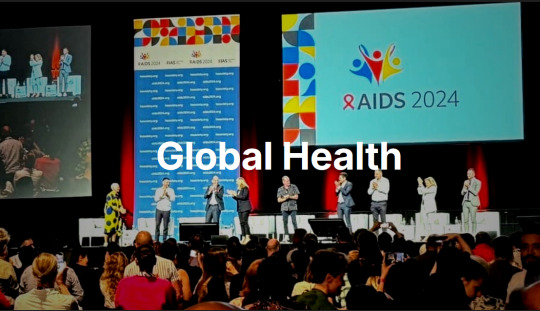
1. A game-changing HIV drug was the biggest story of 2024
In what Science called the 'breakthrough of the year', researchers revealed in June that a twice-yearly drug called lenacapavir reduced HIV infections in a trial in Africa to zero—an astonishing 100% efficacy, and the closest thing to a vaccine in four decades of research. Things moved quick; by October, the maker of the drug, Gilead, had agreed to produce an affordable version for 120 resource-limited countries, and by December trials were underway for a version that could prevent infection with just a single shot per year. 'I got cold shivers. After all our years of sadness, particularly over vaccines, this truly is surreal.'
2. Another incredible year for disease elimination
Jordan became the first country to eliminate leprosy, Chad eliminated sleeping sickness, Guinea eliminated maternal and neonatal tetanus, Belize, Jamaica, and Saint Vincent & the Grenadines eliminated mother-to-child transmission of HIV and syphilis, India achieved the WHO target for eliminating black fever, India, Viet Nam and Pakistan eliminated trachoma, the world’s leading infectious cause of blindness, and Brazil and Timor Leste eliminated elephantiasis.

15. The EU passed a landmark nature restoration law
When countries pass environmental legislation, it’s big news; when an entire continent mandates the protection of nature, it signals a profound shift. Under the new law, which passed on a knife-edge vote in June 2024, all 27 member states are legally required to restore at least 20% of land and sea by 2030, and degraded ecosystems by 2050. This is one of the world’s most ambitious pieces of legislation and it didn’t come easy; but the payoff will be huge - from tackling biodiversity loss and climate change to enhancing food security.
16. Deforestation in the Amazon halved in two years
Brazil’s space agency, INPE, confirmed a second consecutive year of declining deforestation in the Brazilian Amazon. That means deforestation rates have roughly halved under Lula, and are now approaching all time lows. In Colombia, deforestation dropped by 36%, hitting a 23-year low. Bolivia created four new protected areas, a huge new new state park was created in Pará to protect some of the oldest and tallest tree species in the tropical Americas and a new study revealed that more of the Amazon is protected than we originally thought, with 62.4% of the rainforest now under some form of conservation management.
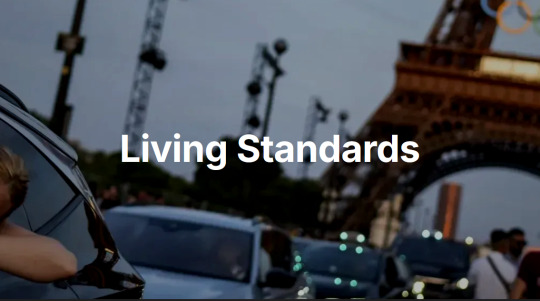
39. Millions more children got an education
Staggering statistics incoming: between 2000 and 2023, the number of children and adolescents not attending school fell by nearly 40%, and Eastern and Southern Africa, achieved gender parity in primary education, with 25 million more girls are enrolled in primary school today than in the early 2000s. Since 2015, an additional 110 million children have entered school worldwide, and 40 million more young people are completing secondary school.
40. We fed around a quarter of the world's kids at school
Around 480 million students are now getting fed at school, up from 319 million before the pandemic, and 104 countries have joined a global coalition to promote school meals, School feeding policies are now in place in 48 countries in Africa, and this year Nigeria announced plans to expand school meals to 20 million children by 2025, Kenya committed to expanding its program from two million to ten million children by the end of the decade, and Indonesia pledged to provide lunches to all 78 million of its students, in what will be the world's largest free school meals program.
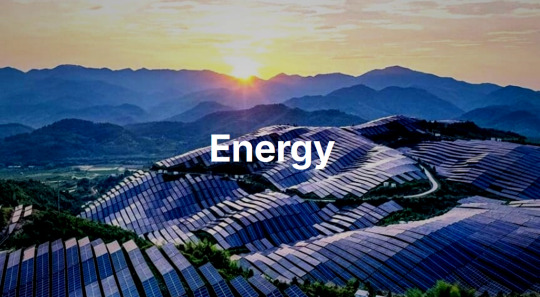
50. Solar installations shattered all records
Global solar installations look set to reach an unprecedented 660GW in 2024, up 50% from 2023's previous record. The pace of deployment has become almost unfathomable - in 2010, it took a month to install a gigawatt, by 2016, a week, and in 2024, just 12 hours. Solar has become not just the cheapest form of new electricity in history, but the fastest-growing energy technology ever deployed, and the International Energy Agency said that the pace of deployment is now ahead of the trajectory required for net zero by 2050.
51. Battery storage transformed the economics of renewables
Global battery storage capacity surged 76% in 2024, making investments in solar and wind energy much more attractive, and vice-versa. As with solar, the pace of change stunned even the most cynical observers. Price wars between the big Chinese manufacturers pushed battery costs to record lows, and global battery manufacturing capacity increased by 42%, setting the stage for future growth in both grid storage and electric vehicles - crucial for the clean flexibility required by a renewables-dominated electricity system. The world's first large-scale grid battery installation only went online seven years ago; by next year, global battery storage capacity will exceed that of pumped hydro.
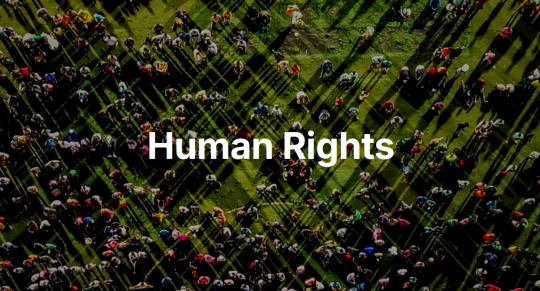
65. Democracy proved remarkably resilient in a record year of elections
More than two billion people went to the polls this year, and democracy fared far better than most people expected, with solid voter turnout, limited election manipulation, and evidence of incumbent governments being tamed. It wasn't all good news, but Indonesia saw the world's biggest one day election, Indian voters rejected authoritarianism, South Korea's democratic institutions did the same, Bangladesh promised free and fair elections following a 'people's victory', Senegal, Sri Lanka and Botswana saw peaceful transfers of power to new leaders after decades of single party rule, and Syria saw the end of one of the world's most horrific authoritarian regimes.
66. Global leaders committed to ending violence against children
In early November, while the eyes of the world were on the US election, an event took place that may prove to be a far more consequential for humanity. Five countries pledged to end corporal punishment in all settings, two more pledged to end it in schools, and another 12, including Bangladesh and Nigeria, accepted recommendations earlier in the year to end corporal punishment of children in all settings. In total, in 2024 more than 100 countries made some kind of commitment to ending violence against children. Together, these countries are home to hundreds of millions of children, with the WHO calling the move a 'fundamental shift.'
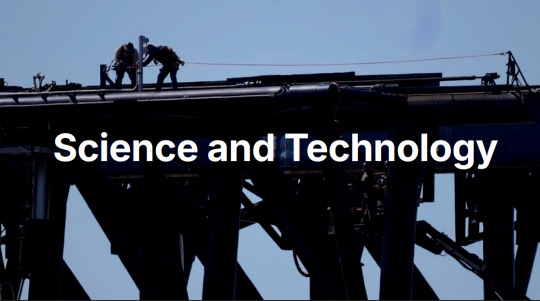
73. Space exploration hit new milestones
NASA’s Europa Clipper began a 2.9 billion kilometre voyage to Jupiter to investigate a moon that may have conditions for life; astronomers identified an ice world with a possible atmosphere in the habitable zone; and the James Webb Telescope found the farthest known galaxy. Closer to Earth, China landed on the far side of the moon, the Polaris Dawn crew made a historic trip to orbit, and Starship moved closer to operational use – and maybe one day, to travel to Mars.
74. Next-generation materials advanced
A mind-boggling year for material science. Artificial intelligence helped identify a solid-state electrolyte that could slash lithium use in batteries by 70%, and an Apple supplier announced a battery material that can deliver around 100 times better energy density. Researchers created an insulating synthetic sapphire material 1.25 nanometers thick, plus the world’s thinnest lens, just three atoms across. The world’s first functioning graphene-based semiconductor was unveiled (the long-awaited ‘wonder material’ may finally be coming of age!) and a team at Berkeley invented a fluffy yellow powder that could be a game changer for removing carbon from the atmosphere.
-via Fix The News, December 19, 2024
#renumbered this to reflect the article numbering#and highlight just how many stories of hope there are#and how many successes each labeled story contains#2024#good news#hope#hope posting#hopeposting#hopepunk#conservation#sustainability#public health#energy#quality of life#human rights#science and technology
3K notes
·
View notes
Text
Career / job search continues
There's this convention in town called ViBe... yea. We can make fun of the name and spelling as well as the fact that the website is a fucking disaster. Which is hilarious because it's supposed to be a health tech show. The whole show's presentation is sloppy af, including using commercial graffiti for stuffy Silicon Valley bros, hospital directors, and doctors. Ask my why I thought the attendees would be worth my time looking over them since I am looking for informatics gigs in health? I have looked at the morning roster for day 1 and every single company talking and listed have below a 4 rating on Glassdoor and Indeed. So a tech show that is supposed to be attracting well to do health industry folks is using really bad commercial graffiti, their website is BAD, and, as an added bonus all their special guests abuse the shit out of workers. Depression and frustration aren't the kind of ViBe I want in healthcare work. Sorry.
1 note
·
View note
Text
Personal emergency response buttons in home care are changing how we look at elderly care. At Grace Home Care Services, we understand how important they are today and recommend them to enhance safety and independence. Let’s explore some key benefits.
0 notes